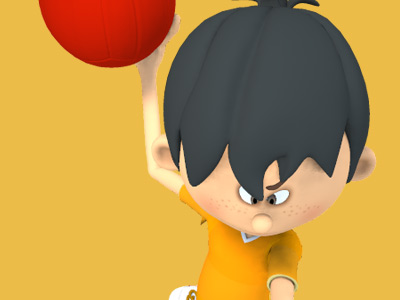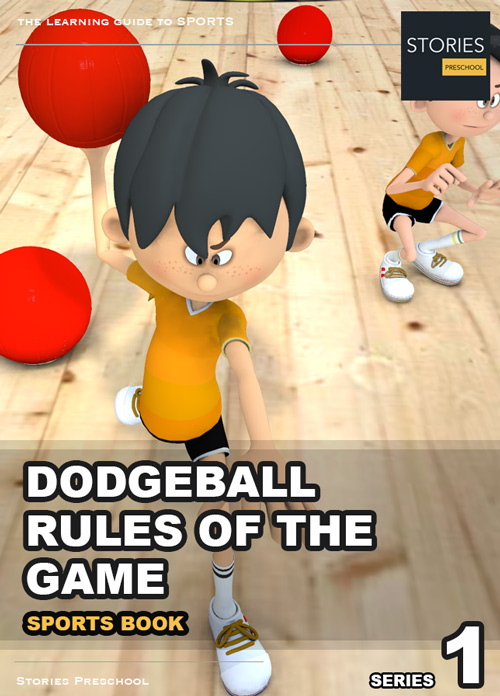Dodgeball
Dodgeball is a game in which players on two teams try to throw balls at each other while avoiding being hit themselves. In North America, the game is typically played among children ages 6–12 in elementary school. However, internationally, the sport has also emerged as a popular middle school, high school and college sport and in some countries universities also play the sport. It is also popular in informal settings and is often played on a playground, community or in organized recreational leagues.
There are many variations of the game, but generally the main objective of each team is to eliminate all members of the opposing team by hitting them with thrown balls, catching a ball thrown by a member of the opposing team, or forcing them to move outside the court boundaries when a ball is thrown at them.

Equipment
The number of dodgeballs used in the game often varies, but three to ten is common. Exceptions are usually made if a court is particularly small or if many people participate. More balls generally adds to the amount of action in a game, but can result in stalemate with many blocks. Six is the minimum number of balls to conduct a game with enforced rules. An odd number is generally favorable as one team will necessarily have a majority of balls in possession and should take the offensive role. Dodgeball is played with many different types of dodgeballs. The big three are Cloth, Foam and Rubber.

Court
A typical dodgeball game is usually played on a basketball court, volleyball court, fenced area or even an Australian Rules Football oval or soccer pitch. There is no fixed dodgeball court design. The game is picked on the best available surface that is usually one of the above-mentioned. Unless it is a variation of dodgeball, the court must have a center line.

Rules of Game
At the beginning of a dodgeball game, the balls are lined up on the central dividing line (in some versions of the game, the balls are thrown in the air for the players to catch or divided evenly to both teams before a match).

The players then simultaneously rush towards the center line and try to grab one of the dodgeballs and throw or roll it backwards to their teammates; players cannot pick up a ball and throw it instantly.

In some versions there is a "check line" that the dodgeballs have to be behind before they can be considered "live." This is known as the opening rush. Once the game has commenced, players throw balls at members of the opposing team in an attempt to eliminate the players.

When a player has been hit by a dodgeball "on the full" (i.e. without hitting the roof, the floor, any of the walls, or an outside object and rebounding off) and no one catches it before it becomes dead, that player has been eliminated and must move to his team's designated bench area (players are still out if the ball rebounds off another dodgeball and/or player and hits them on the full). The same rule applies if any number of people try to catch the ball but drop it. Depending on the rules and variation, "headshots" (balls thrown in dodgeball that hit an opposing player in the head) may either result in the thrower being out, or the person being hit being out, or both.

If a player catches a ball thrown by the opposing team on the full, then the player who threw the ball is eliminated. As long as the ball has been caught in any way and is held for at least two seconds, the thrower is out (i.e. even if the ball is caught between the legs, the thrower is still out). If a dodgeball hits an opposing player but gets caught by one of the hit player's teammates, the thrower is out, a player gets reinstated, and the player who was hit stays in. In dodgeball games that are played on a basketball court, if a player throws the ball and it goes into the opposing basket and/or it hits the basketball backboard on the full, the whole team gets resurrected. The ball is still counted to have scored a basket or hit the backboard on the full if it rebounded off another dodgeball or it was deflected into the backboard by an opposing player. If the ball hits the backboard supports and/or the ring but fails to hit the backboard or go into the hoop, there is no effect. Players cannot be caught out if the ball hits the backboard, backboard supports, and/or the ring.

Players can pick up dead balls and throw them back at the other team. Players are allowed to leave the confines of the court to gather balls that have rolled out of bounds, but cannot throw the ball until they are back inside the court.

A ball thrown from outside the court cannot eliminate an opponent who is hit. It only succeeds in getting the thrower automatically eliminated. A player who moves completely out of bounds when a ball is thrown at them and does not catch that ball is also eliminated. If a player moves into the opponent's zone or picks up a ball from inside the opponent's zone without it fully rolling inside their zone, that player is out. Players can also get eliminated if their throw hits an opponent on the head, displays bad sportsmanship, or cheats. Kicking the balls is prohibited.

Depending on the rules of a particular game, a ball in the possession of a player can be used to block incoming balls thrown by the opposing team. Depending on the rules of the game being played, if a player gets a dodgeball knocked out of their hands from an opposition throw, or drops the dodgeball when it is used to deflect oncoming balls, the player is eliminated.
Once all players on either teams are eliminated, the game is over.

Another alternate rule is ‘No Lines’ or open court. This rule is used at a point in the game when there are few players left and it is too easy to dodge the ball with all the extra room. When ‘No Lines’ is declared, all boundary lines no longer count and the players can go anywhere to get a better shot at their opponent.
SPORTS

RESOURCES
This article uses material from the Wikipedia article "Dodgeball", which is released under the Creative Commons Attribution-Share-Alike License 3.0.
© Stories Preschool. All Rights Reserved.










